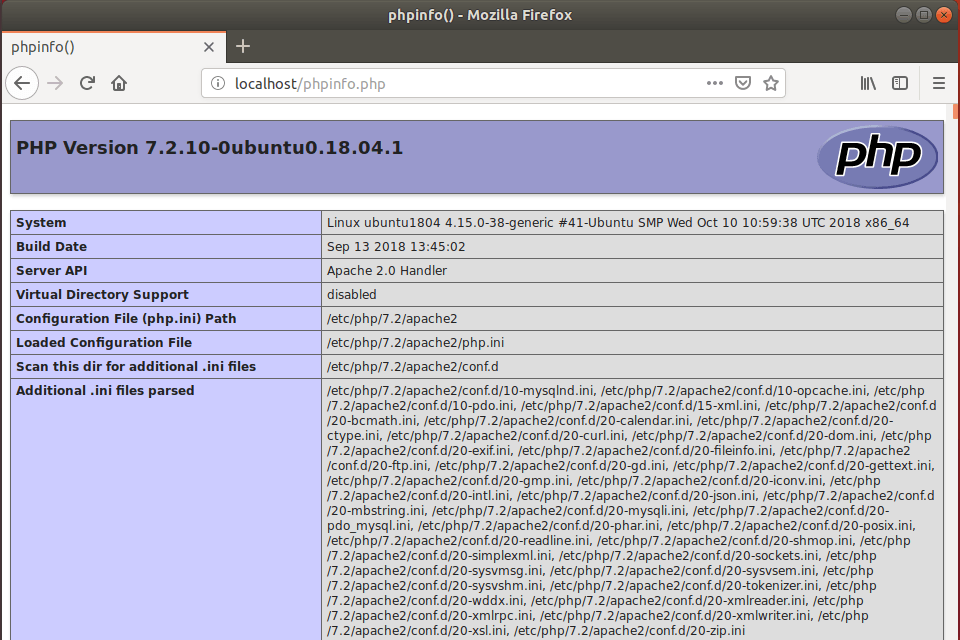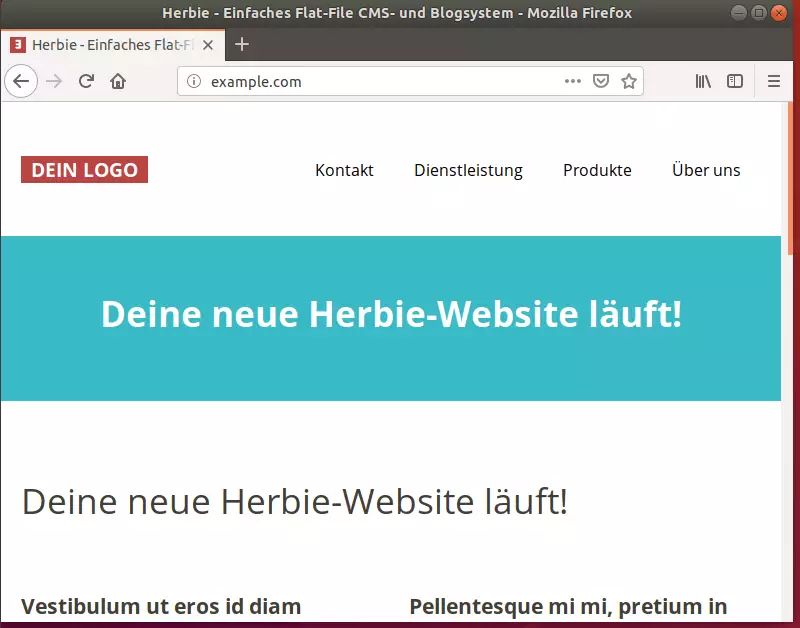This article explains setting up Herbie CMS with Nginx support on Ubuntu Linux.
Herbie is a free, open-source, flat-file CMS (Content Management System) that allows you to build fully functional websites or blogs with simple markup and text files without needing a separate database. Just upload the web content files to your server and enjoy!
Setting up Herbie CMS with Nginx on Ubuntu Linux offers several advantages. Herbie is a lightweight, database-less CMS that allows you to build websites or blogs using simple markup and text files.
On the other hand, Nginx is a popular web server offering excellent performance and scalability. By combining these two tools, you can create a fast, reliable, and easy-to-maintain website or blog without needing a separate database.
Additionally, using Ubuntu Linux as your operating system provides a stable and secure environment for your website or blog.
For more about Herbie, please check its homepage.
Install Nginx HTTP Server
Herbie CMS requires a web server, and the Nginx HTTP server is probably the second most popular open-source web server available today. To install the Nginx server, run the commands below:
sudo apt update sudo apt install nginx
After installing Nginx, the commands below can be used to stop, start, and enable the Nginx service to always start up with the server boots.
sudo systemctl stop nginx.service sudo systemctl start nginx.service sudo systemctl enable nginx.service
Now that Nginx has been installed browse your browser to the URL below to test whether the web server works.
http://localhost

If you see the page above, then Nginx is successfully installed.
Install PHP 7.2-FPM and Related Modules
Herbie CMS is a PHP-based CMS, and PHP is required. However, PHP 7.2-FPM may not be available in Ubuntu default repositories. To run PHP 7.2-FPM on Ubuntu 16.04 and previous, you may need to run the commands below:
sudo apt-get install software-properties-common sudo add-apt-repository ppa:ondrej/php
Then update and upgrade to PHP 7.2-FPM
sudo apt update
Next, run the commands below to install PHP 7.2-FPM and related modules.
sudo apt install php7.2-fpm php7.2-common php7.2-mbstring php7.2-xmlrpc php7.2-sqlite3 php7.2-soap php7.2-gd php7.2-xml php7.2-cli php7.2-curl php7.2-zip
After installing PHP 7.2, run the commands below to open Nginx’s PHP default configuration file.
sudo nano /etc/php/7.2/fpm/php.ini
The lines below are a good setting for most PHP-based CMS. Update the configuration file with these and save.
file_uploads = On allow_url_fopen = On short_open_tag = On memory_limit = 256M cgi.fix_pathinfo = 0 upload_max_filesize = 100M max_execution_time = 360 date.timezone = America/Chicago
Restarting the Nginx web server whenever you change the PHP configuration file would be best. To do so, run the commands below:
sudo systemctl restart nginx.service
Once PHP is installed, create a test file called phpinfo.php in the Nginx default root directory. ( /var/www/html/)
sudo nano /var/www/html/phpinfo.php
Then, type the content below and save the file.
<?php phpinfo( ); ?>
Next, open your browser and browse to the server’s hostname or IP address, followed by phpinfo.php
http://localhost/phpinfo.php
You should see the PHP default test page.

Download Herbie’s Latest Release
You may want to use the GitHub repository to get Herbie’s latest release. Install Composer, Curl, and other dependencies to get started.
sudo apt install curl git curl -sS https://getcomposer.org/installer | sudo php -- --install-dir=/usr/local/bin --filename=composer
After installing curl and Composer above, change into the Nginx root directory and download Herbie packages from Github.
cd /var/www/html/ sudo composer create-project getherbie/start-website herbie
Then, run the commands below to set the correct permissions for Herbie to adjust the directory permissions.
sudo chown -R www-data:www-data /var/www/html/herbie/ sudo chmod -R 755 /var/www/html/herbie/
Configure Nginx Herbie Site
Finally, configure the Nginx configuration file for Herbie. This file will control how users access Herbie content. Run the commands below to create a new configuration file called Herbie.
sudo nano /etc/nginx/sites-available/herbie
Then copy and paste the content below into the file and save it. Replace the highlighted line with your domain name and directory root location.
server {
listen 80;
listen [::]:80;
root /var/www/html/herbie;
index index.php index.html index.htm;
server_name example.com www.example.com;
client_max_body_size 100M;
autoindex off;
location / {
try_files $uri $uri/ /index.php?$query_string;
}
location ~ \.php$ {
include snippets/fastcgi-php.conf;
fastcgi_pass unix:/var/run/php/php7.2-fpm.sock;
fastcgi_param SCRIPT_FILENAME $document_root$fastcgi_script_name;
include fastcgi_params;
}
}
Save the file and exit.
After configuring the VirtualHost above, please enable it by running the commands below.
Enable Herbie Site and Rewrite Module
After configuring the VirtualHost above, please enable it by running the commands below, then restart the Nginx server.
sudo ln -s /etc/nginx/sites-available/herbie /etc/nginx/sites-enabled/ sudo systemctl restart nginx.service
Next, open your browser and browse the server hostname or IP address. You should see the Herbie page. Enter your blog info and complete the setup.
http://example.com/

Herbie began as a databaseless flat file content management system. Its structure allowed you to have just the amount of functionality needed in a flat file CMS solution, adding extensions (blade packs) for additional functionality while allowing setup on simple servers with no database.
You may also like the post below:

Leave a Reply